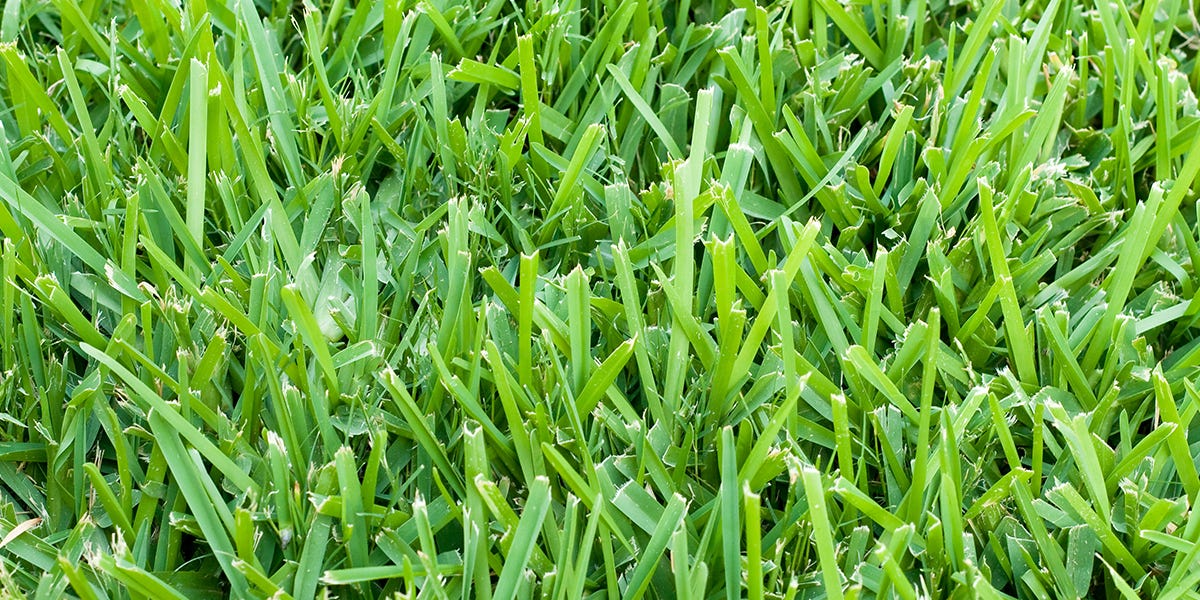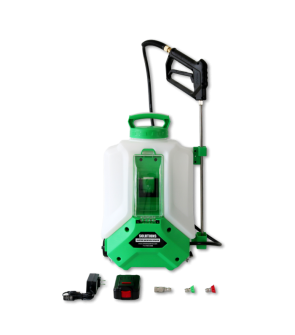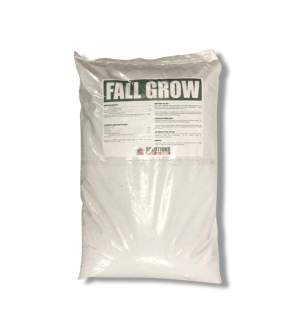Gain access to personalized product screening, the best pricing, rewards, and more!
Most Effective Products
St. Augustine Grass Control: How to Maintain St. Augustine Grass Yearly
This page is a general St. Augustine Grass yearly maintenance program. Using the suggested products and methods, you can control your turf. The St. Augustine grass page gives additional information on the different species and specific treatment instructions and options. Follow this guide and use the recommended products and methods, and we guarantee 100% improvement in your St. Augustine grass.
St. Augustine Grass is a warm-seasoned grass common in the southern and coastal regions of the United States. With its coarse blue-green texture and thick blades, it forms a mat-like covering even in shaded areas, requiring some level of maintenance. St. Augustine Grass thrives in warm tropical environments and is an ideal turf for near coastal regions due to its salt tolerance.
St. Augustine Grass is the best of all warm-season grasses to grow in shaded areas of your yard. It uses far less light to survive in areas without sunlight, but it still needs low to high sun exposure. While there are a variety of St. Augustine grass species, some of the most common names it is known by are Flora tam and Charleston grass.
While St. Augustine grass is resistant to heat, drought, humidity, and salt, it is not very tolerant of heavy foot traffic or cold temperatures. Compared to other warm-season grasses, St. Augustine grass is the least tolerant of cold and will need a good amount of water to survive.
Maintaining a yearly maintenance program can be difficult in states with diverse climates, but it is not impossible. You might need to adjust the schedule based on the year's climate, weather, and your location. Follow our simple DIY schedule guide below, using the recommended products while monitoring the weather conditions during application, and your St. Augustine grass will look great in no time. Our trained professionals are available via phone or email if you have any questions.
Identification

Before moving forward with a treatment program, you must properly identify St. Augustine Grass by knowing what it looks like. Misidentifying St. Augustine Grass can lead you to use the wrong products, costing you time and money. Here are some traits to look out for when identifying St. Augustine Grass:
- St. Augustine Grass is a coarse-textured warm-season grass that spreads rapidly through its stolon above the ground. The stolons are slender and will branch laterally across your lawn. It will provide a dense mat-like coverage on your turf.
- It has a low wear tolerance and cannot be used in areas with heavy foot traffic. Your home or commercial building would be an ideal location for St. Augustine grass.
- St. Augustine Grass is a creeping perennial and will form a dense coverage where it is established. It is ideal for warmer climates and coastal regions due to its heat and salt tolerance.
- St. Augustine Grass prefers warm climates and shaded areas.
- It is generally described as having large, flat stems and wide, coarse grass blades that round at the top.
- Not many species of St. Augustine grass reproduce by seed; instead, it is established via sod, plugs, or stolons.
Use the above description and images to help you identify St. Augustine grass on your lawn. If you are unsure whether the plant is St. Augustine Grass, contact us with a photo of the plant, and we will properly identify the grass for you and give you the proper product recommendations.
Inspection
After you have confirmed that the grass you have is St. Augustine, you can move forward with the inspection. During this phase, you will need to pinpoint the areas where St. Augustine grass is concentrated, whether it is mixed with other species of grass, and what the conditions are. This will help you determine where to focus your herbicide, fertilizer, and pre/post-emergent treatment.
When to Inspect
St. Augustine Grass is a warm-season grass, so it is typically the most active from early spring to late summer. To get a jump start on your care program, we suggest determining the grass species on your lawn at the beginning of spring.
What to Look For
If you have St. Augustine grass growing on your lawn, it is hard to miss because it will usually cover the entire area of your property. St. Augustine Grass likes to grow in moist or salt-enriched soil (ideal for beach homes) and areas where the turf is not exposed to much foot traffic.
Treatment
Before starting any treatment, wear the appropriate personal protective equipment (PPE) to protect your eyes, mouth, face, hands, and feet.
Since St. Augustine grass is a warm-season grass, it is best to begin in the early spring or summer when the grass is young, healthy, and out of dormancy. The application will take multiple steps, so the earlier you begin, the faster you can take charge of the appearance of your turf.
Step 1: Test the Soil in February
You will take a sample of your grass and soil in the early spring when your turf is just awakening (usually at the beginning of February).
Send the sample to your local extension office, which the National Pesticide Information Center governs. This is recommended for the best and most accurate results of the type and level of nutrients or possible underlying diseases within your turf you may have.
Understanding the level of nutrients, type of soil, and any possible underlying diseases can help you choose the correct herbicide, fertilizer, or fungicide.
You can contact a trained professional at Solutions Pest and Lawn for identification. Our team can also suggest products or tips you may not find in this article.
Step 2: Measure Treatment Area in February
To determine the amount of herbicide, insecticide, or fungicide product to use, you will need to assess the square footage of the area to be treated. If unsure of the treatment area's square footage, follow the formula (length X width = square footage).
For acreage, you will take the measured square footage of the treatment area and divide it by 43,560. For example, if you have a 12,350-square-foot lot, you will follow this formula (12,350 / 43,560 = .28 acres).
The previous soil test is used to determine how many pounds of fertilizer to use for a specific amount of nutrients.
You will need to divide the percentage of that nutrient in decimal form as contained in the bag into the desired amount of pounds for that nutrient.
For example, in Solutions 15-5-10 Weed & Feed Trimec Fertilizer, to determine how much fertilizer is needed for 1 pound of nitrogen, you will divide the 1 from the nitrogen level in the fertilizer.
In fertilizers, there will always be three sets of numbers that represent nitrogen, phosphorous, and potassium, which represent the neck (nutrient) level in the fertilizer. So, you will take the 15 (convert to decimal form) in the weed & trimec fertilizer and divide it by 1 to determine how many pounds should be used per sq. ft. (1 / .15 = 6.66 lbs.). Therefore, apply 6.66 pounds of fertilizer per 1,000 sq. ft. to supply 1 pound of nitrogen (if the nutrient level is needed in the soil).
3. Replace Damaged Turf From February to March
Within two to three months of the spring season, your turf will begin to look a more vibrant green, but do not be dismayed if some areas are still bare.
You can replace these empty areas and achieve an instant lawn by sodding on days when the temperature is between 80 to 90 degrees. Sod is a type of grass that has already been planted and cut into a sectioned piece of grass that still contains the roots of the turf.
This method is ideal for homeowners with St. Augustine grass because not many species of St. Augustine grass can be grown from seeds and must be installed by sods or planting plugs. Plugs are rooted pieces of sod that will eventually spread to empty spaces around them and form a dense lawn.
Before applying the sod to the treatment area, rake the turf to help loosen the dead grass roots and soil, thus allowing the new sod to grow more easily.
4. Mow Your St. Augustine Grass From March to July
Timing is key for mowing. Begin a routine mowing program when the St. Augustine grass is out of dormancy and turns green in the spring.
Typically, this will be at the beginning of March, when the grass starts to grow actively. It is important to know that St. Augustine grass requires different levels of mowing in each season. Depending on the rain frequency (which stimulates turf growth), you may mow more than once a week.
From spring to summer, you will want to keep your mower at a low mowing height to allow your grass to grow actively. To achieve this, you must set your mower setting between 2 to 2 1/2 inches high, and for shaded lawns, you will keep it at least 3 inches high. Be careful not to set the mower blades too low, as it may cut the grass's root, cause the turf to brown, or wither from dehydration. Yes, this means you will have to mow more frequently, but this is good because your St. Augustine grass will be stimulated to grow.
Another unexpected benefit is when you're mowing, you will notice lumps of grass or dirt on your turf. When your mower's blades pull the grass from its core, it helps oxygen and nutrients reach your grass roots by loosening the soil. This is known as aeration, which you can do after mowing to help your lawns. To help spread nutrients back into your yard, either collect the lawn clippings to form mulch or leave grass blades where they fell to return nutrients to the soil.
In the fall, you will keep either shaded or non-shaded turf at least 3 inches high before you mow. Continue to mow until your lawn goes dormant for winter.
5. Water Your St. Augustine Grass Throughout the Year
Watering your St. Augustine grass throughout the year is ideal for its health.
St. Augustine grass does well when watered up to an inch each week, like any other turf type. St. Augustine Grass can sometimes require a little more water than other types of lawns, but depending on the season and environment, this can be subject to change.
During winter, water at least once a week. Cooler regions with higher rainfall will not need as much watering. From spring to summer, water 2 to 3 times per week. If you see your lawn is not draining well, do not continue to water until the water has evaporated.
6. Weed Control in August through September
Between the end of summer and early winter, we recommend applying a pre-emergent herbicide like barricade due to its effective rates of keeping broadleaf and grassy weeds from germinating. It contains prodiamine, a highly effective active ingredient that controls and prevents the growth of weeds.
Barricade can be applied at 4 pounds per 1,000 sq. ft.
Measure the square footage of your lawn to determine how much Barricade you will need. Once you have measured the appropriate amount based on your calculations, load the Barricade granules into a hand or push spreader at the right calibration setting. Then, apply the granules until your lawn is covered evenly to get a uniform application.
A push spreader is preferred if you have a large property to spread the granules on while a hand spreader, like the Plantmates Scatterox, is better for more precision and control over where you want to spread the granules.
After broadcasting the granules, you should water and activate them with at least 0.5 inches of water.
We recommend using Fahrenheit Herbicide at 3 to 12 oz. of product per acre for weeds that have already emerged. To apply this product, you must use a handheld pump sprayer or backpack sprayer. Fill your selected sprayer halfway with the appropriate amount of water, then add the measured Fahrenheit Herbicide and fill the rest with water. Close the sprayer lid and shake to ensure an even mixture. Spray the top and bottom of the leaves, but not to the point of run-off.
Keep in mind to apply a pre or post-emergent herbicide at least three weeks after applying a sod or plug. You do not want to apply a herbicide in newly established sod because it may harm the roots of your sod.
7. Insect Control July through September
You may not see the insect infestation from the middle of summer to early fall, but you are seeing their handiwork.
St. Augustine Grass attacked by insects will be withered and brownish-yellow. If you know you have an insect infestation, the first thing you will need to do is identify the pest. Without proper identification, this can lead to unnecessary product purchases. If you are unsure, you can look at our insect control articles or reach out to a Solutions Pest and Lawn team member. We are always happy to help with any questions you may have.
Our top recommendation for eliminating turf insects is Supreme IT Insecticide. This product works best because it has a broad spectrum label and targets various insects. Supreme IT Insecticide is a liquid concentrate that will kill insects within one hour and last up to 90 days. The longer this product fights against insects, the better your St. Augustine grass will look in the long run.
Determine how much insecticide to use by calculating the square footage of the area to be treated.
To do this, measure the treatment area's length and width in feet, then multiply them together (length X width = square footage).
Supreme IT Insecticide can be mixed between 0.2 fl. oz. and 2 fl. oz. per gallon of water. We recommend 1 fl. oz. per gallon for general pest applications to treat 1,000 sq. ft., but you can find exact rates on the product label.
Load your sprayer halfway with the proper amount of water, add the measured Supreme IT Insecticide, and then fill the sprayer with the remaining water. Agitate well, apply uniform coverage around the home's perimeter, and apply on the top/bottom of foliage leaves.
8. Fertilize Your Turf from March to August
From March to Late August, you may need to fertilize your St. Augustine grass.
As an aggressively growing species, St. Augustine grass does not necessarily need fertilizers, except when it is just emerging from winter dormancy. Another way to determine when to fertilize your St. Augustine grass is to monitor its growth. If unsure, it may be best to take a sample of your turf and have it tested at your local extension office to determine the present level of turf nutrients.
A granular fertilizer like Solutions 15-5-10 Weed & Feed Fertilizer, Pro Gro 19-4-10 Fertilizer, and Solutions 8-12-16 Fall Fertilizer is our go-to product for fertilizations. Weed & Feed Fertilizer should be applied in spring (March), Pro-Gro in the summer (June), and Solutions 8-12-16 in the fall (August).
For the spring application, Solutions 15-5-10 Weed & Feed contains the best of both worlds, combining a fertilizer and weed killer. As a granular product, this fertilizer will have a long residual effect on your St. Augustine grass and help provide an ongoing set of nutrients and protection against diseases and pests.
Before applying this product, cut your grass at least 1 to 2 days before for better fertilizer activation within the soil.
For Weed & Feed Fertilizer applications in March, you will need to apply 3.2 to 4.0 pounds of product per 1,000 square feet of turfgrass. For Pro Gro application in June, apply 5 lbs. of fertilizer per 1,000 sq. For Solutions 8-12-16 Fall Fertilizer, apply in August with an application of 5 pounds of product per 1,000 square feet.
Load your selected spreader with a measured amount of fertilizer and put the spreader on the correct setting for your specific spreader model (check the label for details). If you are unsure which setting to use with your spreader, you can test your spreader settings on 250 sq. ft. of turf. You aim to apply 1 pound of product per 250 sq. ft., so adjust your settings until this rate is reached. Begin broadcasting the product at the edge of the lawn and walk around the yard's perimeter steadily. Then, walk back and forth across the yard to cover the space in the middle.
Water the lawn 1 to 2 days after applying fertilizer.
9. Reapply Pre-Emergent Herbicide from September to December
The best way to ensure your St. Augustine grass continues to be better defended against broadleaf and grassy weeds is to reapply a pre-emergent herbicide like Barricade between September and December (before the ground becomes frozen).
Key Takeaways
- St. Augustine Grasses works well in warm, tropical environments with consistent access to water.
- St. Augustine Grass does not have many species that grow from seeds and will mainly grow from sod, plugs, or stolons.
- There are several herbicides to use, but we recommend Barricade.
- Reapplication and monitoring of your turf are necessary for successful results.
























